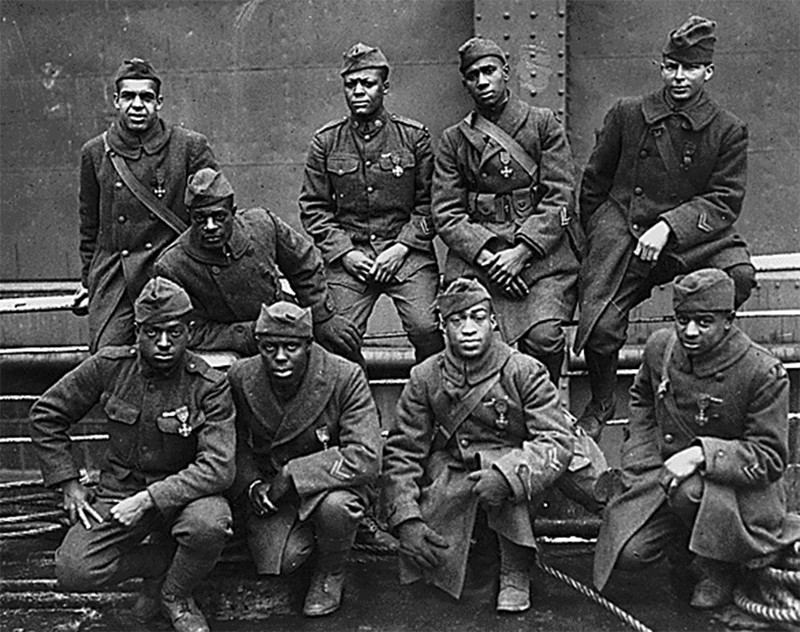It’s time to learn about the everyday bravery of Blackness in America

 To me, bravery is bringing my authenticity despite the risks and creating “brave spaces” and not promising “safe spaces” when I do not know what safety means for everybody.
To me, bravery is bringing my authenticity despite the risks and creating “brave spaces” and not promising “safe spaces” when I do not know what safety means for everybody.
When was the last time you were brave?
I want to share a story about bravery that many of you may not know. The 369th Infantry Regiment Harlem Hellfighters was the first and only Black infantry unit in combat in World War I. They endured 191 days under fire in Europe – more than any other American unit.
They are one of the most celebrated and decorated Black Army regiments to ever serve on the battlefield. But instead of being honored when they returned, they were met with seething racism and segregation when the war ended in 1918.
Our current understanding and story of Blackness, and what it should encompass, was taken from Black folx in every beginning leading up to this Black History Month. As a country, we experience a history built on a dominant narrative that silenced and erased alternative accounts.
To live a life in a Black body, one faces multiple oppressive forces – including racialization, socioeconomic status, class, ability, sexuality and gendering.
Realizing more histories
I sometimes hear the message: “It’s so much better now for Black people.” But can we really be progressing if there is so much more yet to learn?
The first half of the 20th century chronicles the remarkable commitment of Black people to America. With terror lynchings ongoing and 6 million fleeing the American South to cities including Chicago, Cleveland, Detroit, Los Angeles and Oakland, they were not immigrants looking for economic opportunities but rather exiles and refugees of violence. In this time of the Great Black Migration, Black folx had to find new ways to cope with trauma and succeed. And they continue to break barriers today.
We have experienced a Black man serving eight years in the highest elected office in the country. We also now have achieved a Black woman in the second highest elected office who hails from Oakland, one of those cities in the Great Black Migration.
But Black people who have ascended to ever-greater heights in society are only one measure of Black progress. This last election took place in the same year Breonna Taylor, Ahmaud Arbery, Tony McDade and Monika Diamond were hunted, targeted and lost their lives due to bias and fear.
Understanding the struggle
We still actively need to keep Black progress in perspective. We cannot understand Black achievement without being educated and knowing the deep and long legacy of Black struggle and truly how recent some of the atrocities have occurred in our history.
Black History Month is a time for Americans to dig deeper and learn more about moments of the Black experience.
Begin by learning about one story of everyday Black bravery. Here’s a starter list of a dozen extraordinary Black folx who have informed medicine, science, activism, the arts, sports, justice and education. They represent multiple marginalized intersections.
Henrietta Lacks. Mary Ellen Pleasant. Phill Wilson. Matthew Henson. CeCe McDonald. Zora Neale Hurston. Bayard Rustin. Kylar Broadus. Arthur Ashe. Miss Major Griffin-Gracy. Audre Lorde. A. Philip Randolph.
Learn one and teach one.
Kiku Johnson is Rainbow Community Center’s executive director. As a man of color and trans experience, Kiku has invested his life engaging and elevating youth and adult voices of marginalized intersectional identities. Send questions and comments to kiku@rainbowcc.org.
